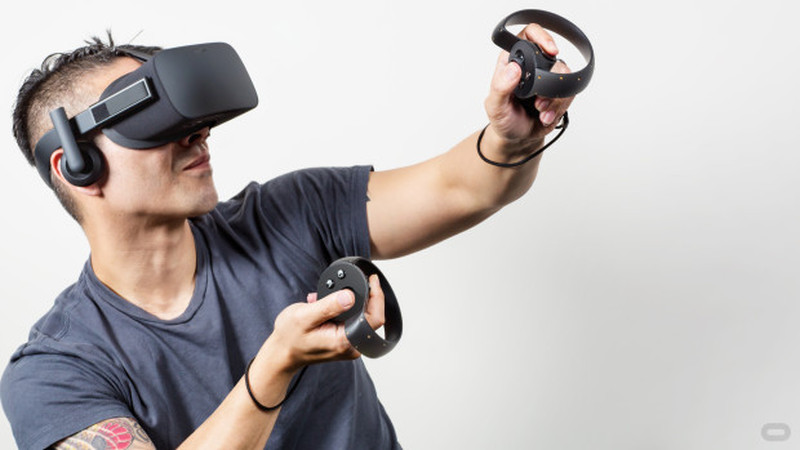Oculus Rift's Touch Controller Changes Everything
August 30, 2016
At Gamescom a few weeks ago, I had an appointment to see Oculus and try out the soon-to-be-released retail version of the Rift, which I was interested to see but not exactly singing with excitement about.

I’ve tried various VR technologies several times by now, as well as the Oculus itself, which I’ve been using once every few months or so since the first DK1 kits were shipped out. I’m VR-curious and pretty enthusiastic about the technology, but I’m not a full-on believer in its ability to transform our lives. Or at least, I wasn’t until I tried Oculus Touch, which is the new specific controller that will be released sometime early next year after the Rift itself is commercially available.
The Oculus Touch comprises two hand-held controllers that are less big and bulky than the HTC Vive things (those are bigger than a PlayStation Move). They’re... well, hand-sized, like a Wii nunchuck. On top there’s a little analogue control stick for your thumb and then there are two triggers under your fingers. One of them controls your index finger and the other controls your other three fingers, so you can do Night Fever pointing and, more importantly, gripping.
This post originally appeared on Kotaku UK.
The current demo drops you straight into what is best described as a Matrix-style playroom full of objects to pick up, throw around, control, point, shoot and otherwise manipulate in virtual space. There with me in the room was an Oculus demonstrator, whom I could see as a wire-mesh head and set of hands. Because we were occupying the same space and could hear each other as if we were sitting opposite, I kept forgetting that in reality he was in another room. We could play ping-pong with each other, throw and catch things, chat and mess around in virtual space, as if he were actually there.
It was among the most impressive tech demos that I’ve ever seen, and there has been a lot of competition. As soon as I got out I called our news editor Julian and insisted he try it out. He was equally blown away. Here is why.
Julian Benson: The thing that left me so excited was how quickly I accepted the virtual version of the demonstrator was in the same space as me. As soon as I slipped on the headset and he started speaking to me, I responded to him as though he was in the same room. It was more than just speaking to each other, too, we were both using our hands to make the sorts of gestures you do in everyday conversation.
Keza MacDonald: It was slightly off-putting that he was just a wire-mesh representation of a head and some hands. I had a really weird experience when I first put the headset on; someone in the real world was walking towards me with the Touch controllers, and it looked like a disembodied pair of hands was just floating towards me in cyberspace. Then they became MY hands. But I can totally imagine in a year or few that the avatars in virtual space will look... well, just like us.
Julian: Or not at all like us. Think of the freedom we have with character creators now. We could make them look like us, or we could look like anyone we wanted.
Similar articles:
Publisher: VRExtasy